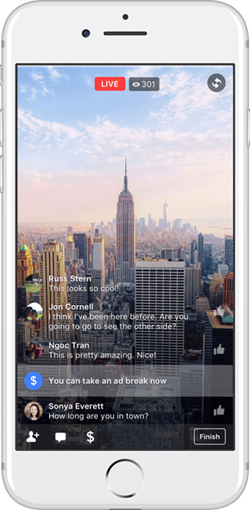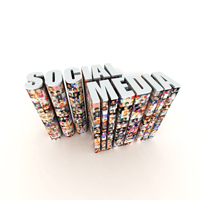Advertising on Live Social Formats

One of the ideal parts of advertising is that brands can control their message whether it is addressing their value proposition, their competitors, audience sentiment or a number of other factors that they alone determine. When it comes to a new trend of advertising on live social formats, however, some different rules coming into play.

Let's look at a few live offerings, whether they offer advertising within that format and what to expect when using them.
Facebook: In Feb. 2017, Facebook announced it was expanding its beta test of Ad breaks in Facebook Live to additional profiles and Pages in the U.S. (as of publication this feature is still in beta). What this means is that beta testers can insert 15-second or less ads within their live broadcast for a 55 percent (publisher)/45 percent (Facebook) revenue split.
Ad Breaks only become available after the video has 300 or more people watching at the same time (there's other eligibility criteria detailed here).
Snapchat: Not available to just any advertiser yet, but Snapchat debuted a live-streaming ad earlier this year. The live ad ran for 45 minutes and disappeared after the broadcast according to Variety. There are other ways to go live on the network, however, such as inserting an ad between users' live Stories or to use a sponsored location-based filter or Lenses (which could place antlers on a person, for example). Snapchat users do not have control over what ads are shown after their friends see their Stories but can self-select filters and lenses to add character to their posts. Therefore, users are not only engaging with ads themselves but then promoting those ads to their friends by using branded Lenses or geo-filters.
Twitter: The network that earned its reputation on its real-time nature has several ways to advertise "live." For example, advertisers can use Event Targeting to discover, plan for, and activate events on Twitter. A company could, for instance, schedule its pizza advertisement during a basketball game local to certain users. Or, a tech company could advertise a competing product when their competitor is hosting its annual event. Brands looking for other events can use Twitter's event tool to see what is coming up and get insights about the event like number of fans the event is expected to reach. Twitter also offers ways to reach audiences through live or nearly-live video.
Instagram: Similar to Snapchat, Instagram allows brands to insert advertisements into Stories. Instagram benefits from Facebook's self-serve ad platform so that advertisers can select their ad placements (in this case it would be Stories) and follow the steps to publish and evaluate the ad within Insights. Instagram also offers verified accounts the ability to include links within their Stories (users swipe up to follow the link) so the ads appear more native. Currently "swipe up" ads are in beta and only available for verified accounts (which can include influencers pushing product).
There are clearly many advancements in advertising in live social formats, but most are in the test phase. 4C CMO Aaron Goldman tells Website Magazine that real-time advertising works best when the targeting, creative and destination are in sync with real-world events.
"Whether its pairing second-screen ads on social media to live moments on TV or severe weather triggers, the opportunities for brands to break through the clutter are abundant," said Goldman.

Subscribe to Our Newsletter!
Latest in Social Media










